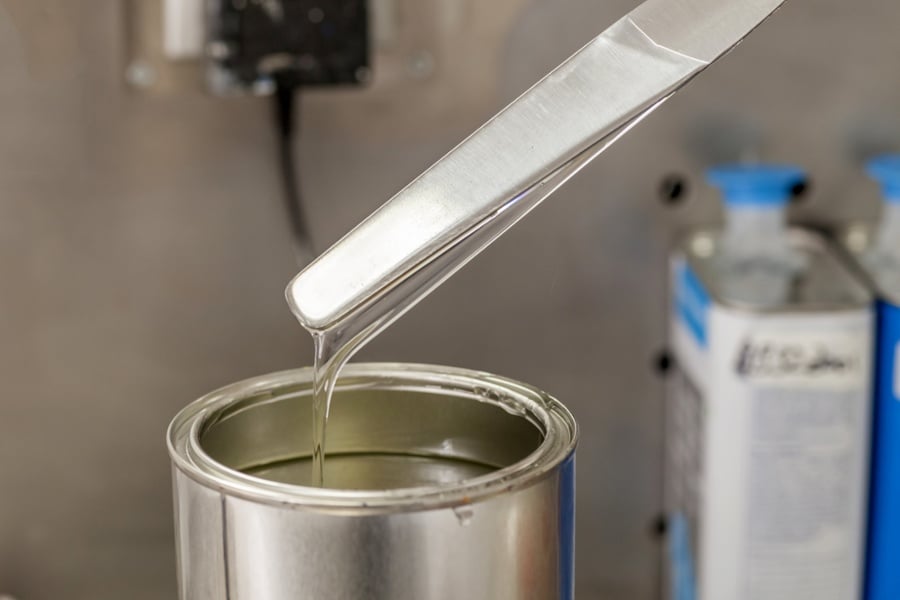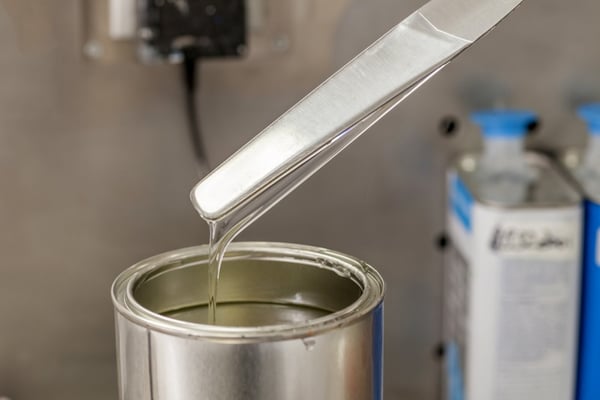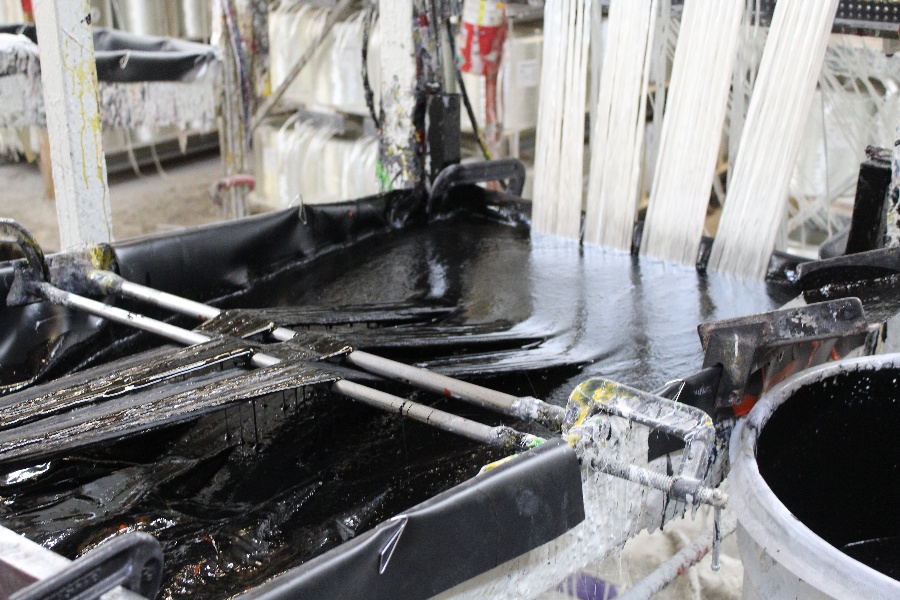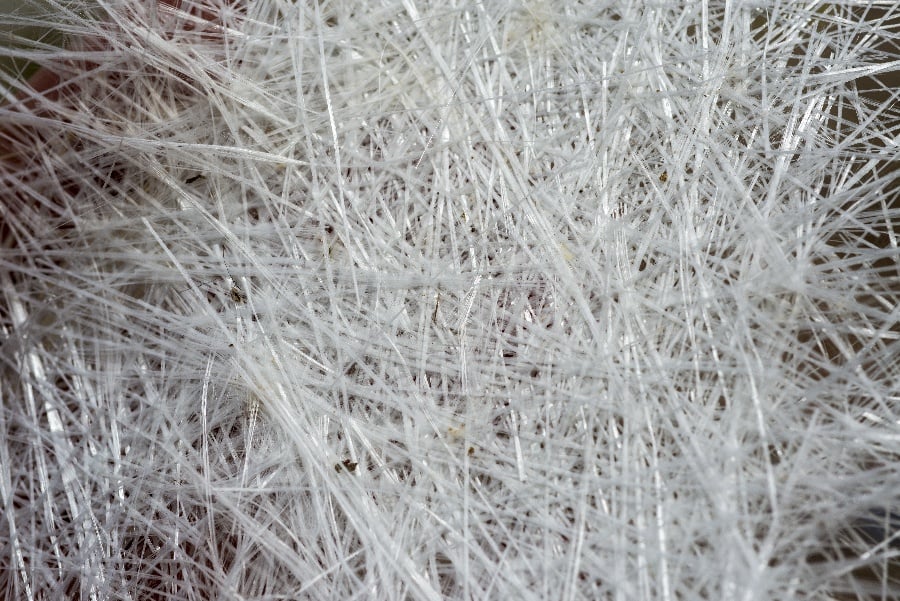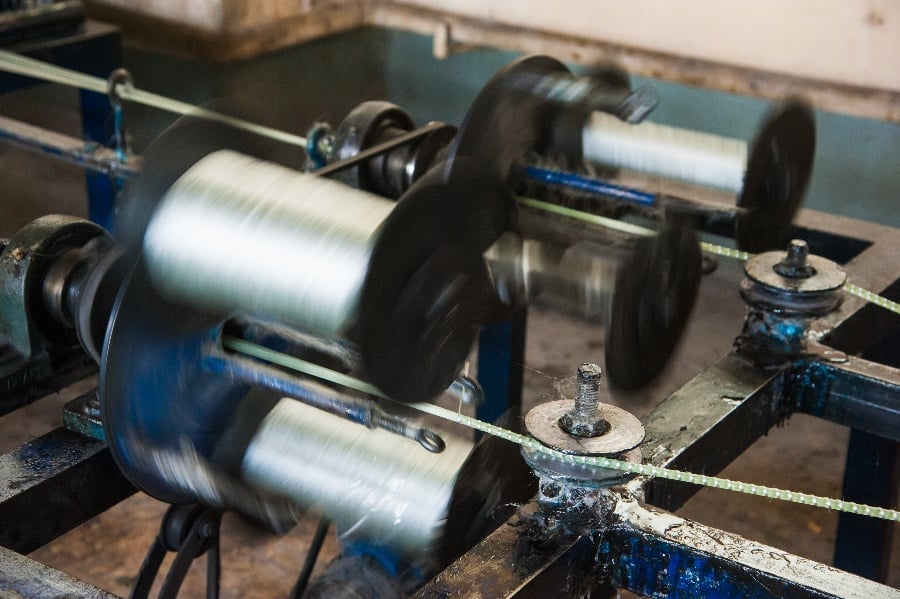Pultruded fiber reinforced polymers (FRP) are diverse composite materials used in a range of industries around the world. From aerospace to architecture and everything in between, FRPs are fast outperforming traditional materials.
There are many benefits to using FRP composites, most of which can be attributed to the specific resins used in their manufacture. Need fire safety? Try Tencom’s fire retardant polyester resin system. Fatigue resistance?
Request a super high strength epoxy. Whatever properties you need, there is a resin to get you there.
This article will uncover the pultrusion manufacturing process, give examples of resin types, and discuss the impact your choice of resin will have on end products.
The Pultrusion Process
Pultrusion is a method of FRP manufacturing that pulls continuous fiber materials through a resin bath for reinforcement.
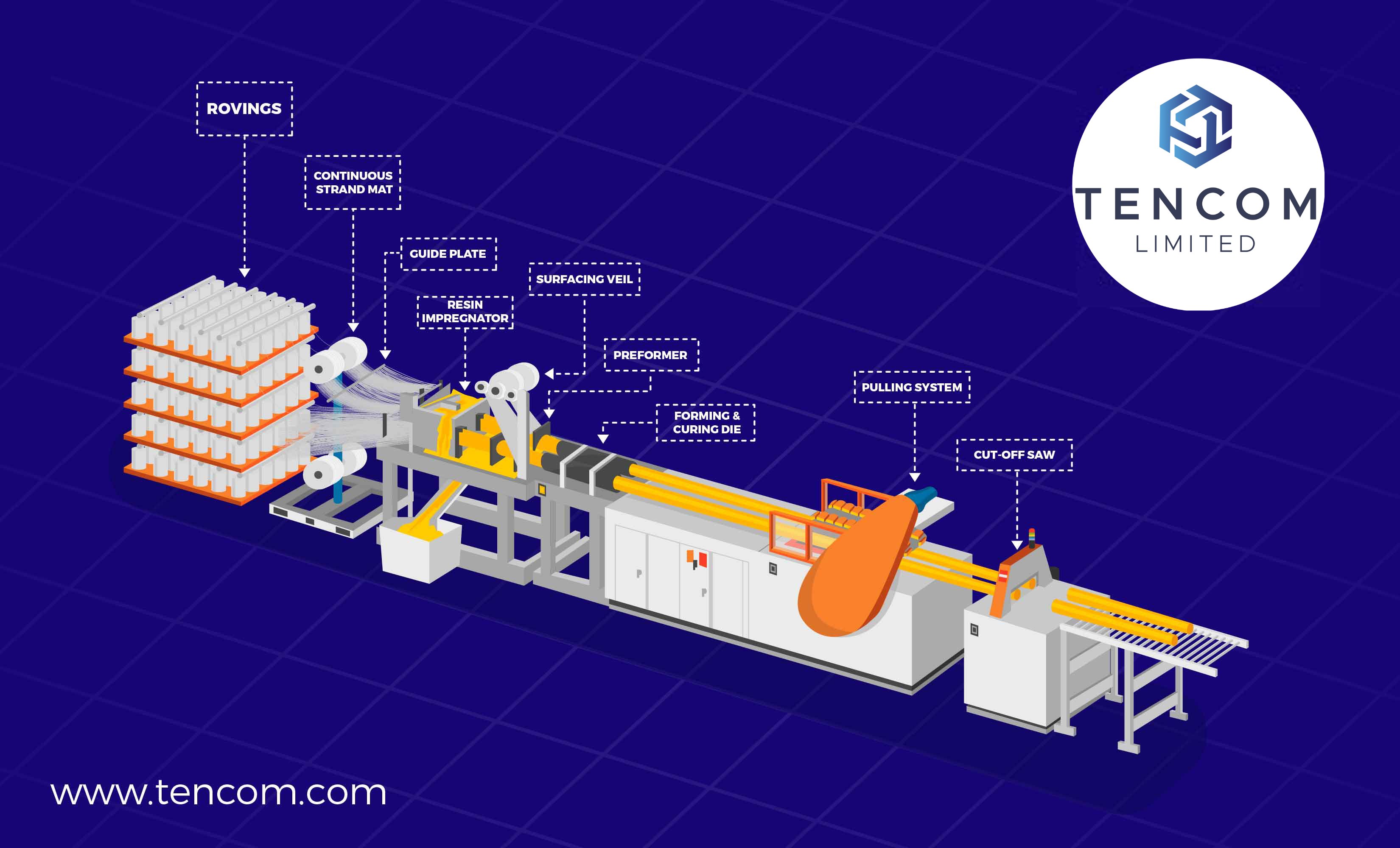
The liquid resin permeates the material and impregnates it with a range of technical and performance properties dependent on the resin used. Once saturated, the material is cured (polymerized) and your FRP is ready for deployment.
For more information on the pultrusion process used at Tencom, read our guide.
Types of Resin
There are numerous resins on the market for use in pultrusion and they all fall within two broad categories; thermoplastic and thermoset resins.
Thermoplastic resins are a class of resin that after curing has a determined melting point, meaning they can be reheated and reshaped multiple times.
On the other hand, thermoset resins do not have a determined melting point as they set into a rigid final form during the curing process and cannot be reheated and reshaped as thermoplastics can.
These resin categories each have benefits and drawbacks depending on the specific goals of the product so it’s important to be informed about all resins before committing to one.
Additionally, a range of additives can be incorporated into the resin to enhance certain properties (i.e. fire retardancy, UV protection, reduced shrinkage, etc) so choosing the right resin is just one step of a multi-part process.
Examples of Thermoplastic Resins
There are many resins available with thermoplastic properties. These resins include (but are not limited to):
- Polyphenylene Sulfide (PPS)
- Polyvinylidene Fluoride (PVDF)
- Polyetheretherketone (PEEK)
- Polypropylene (PP)
- Polystyrene (PS)
- Polyamide (PA)
The Application of Thermoplastic Composites
The thermoplastic composites market is a high demand market experiencing rapid growth across many industries and is expected to reach USD 36 billion by 2024, at a CAGR of 5.2% between 2019 and 2024.
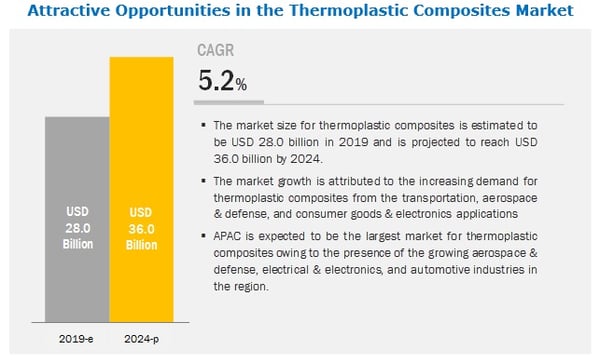 Picture Source: https://www.marketsandmarkets.com/
Picture Source: https://www.marketsandmarkets.com/
Once cured, thermoplastic resins become durable, flexible, and chemically inert as well as impact-resistant. Because of this, thermoplastics are common in a range of applications; particularly in the manufacture of tough, impact-resistant parts.
Examples of thermoplastic applications in this way include offshore parts, piping applications like spoolable tubulars and downhole equipment, and automotive bumpers.
One of the main industries employing thermoplastic composites is aerospace and defense. Because thermoplastics are extremely lightweight and durable, they allow for efficient design and lower fuel consumption when used in this field.
Luggage bins, seats, trolleys, and fuel pipes are just some of the components that can be produced using thermoplastic resins in the pultrusion process.
A potential downside to using thermoplastic resins is that exposure to high temperatures can lead to their deformity. Because of this, it is important to ensure that the resin melting point won’t be encountered during its use-life.
The best way to do this is by talking to the people at the composite manufacturing plant to find a solution.
Alternatively, if your product requires heat resistance under extremely high temperatures, thermoset composites might be your solution.
Examples of Thermoset Resins
Within the class of thermoset resins, there are numerous resins available. These include (but are not limited to):
- Saturated and Unsaturated (UP) Polyester
- Vinyl Ester
- Epoxy
- Phenol Formaldehyde (PF, Phenolic)
- Polybenzimidazole (PBI)
- Urea Formaldehyde (UF)
The Application of Thermoset Composites
The thermoset composites market is the larger market of the two types discussed here and is expected to reach USD 57.98 billion by 2021, at a CAGR of 6.67% between 2016 and 2021.
Within this market, polyester resin accounted for the largest share in terms of volume and because of high yield and superior processing properties, epoxy resin accounted for the largest in terms of value.
The popularity of thermoset composites comes in part because of their easy manufacture. When uncured, thermoset resins take on a liquid state at room temperature, allowing for the easy saturation of reinforcing fibers in the pultrusion process.
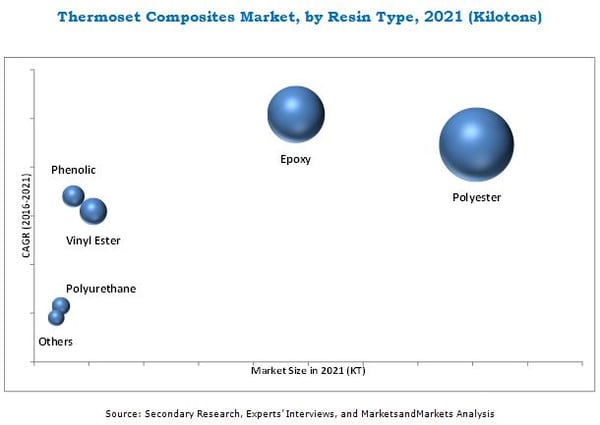
Thermoplastic resins, on the other hand, reach a liquid state at far higher temperatures, making them harder to work with and increasing their manufacturing costs.
From a performance standpoint, thermoset composites perform best in high-performing structural and fire-resistant applications as they have superior structural stability and cannot melt.
Because of this, common applications are in civil engineering, appliances and electrical, and commercial and residential construction.
Tencom has produced pultruded thermoset products for ultra-high temperatures that have given test results of 575°F (302°C) for Glass Transition Temperature (Tg).
This makes it the highest Tg pultruded material ever tested and further confirms the tolerance of thermoset composites.
Other examples of thermoset end products include fiberglass poles as tree and vine support, telescoping poles, and crossbars, electrical components such as terminal boards, arc shields, and standoff insulators, and common use items like fans, ducts, and pumps.
Conclusion
By taking a look at pultrusion manufacturing and the array of resins available, the diversity in resin application and their impact on end products is clear.
Regardless of your project, by tailoring the resins used, there will be an FRP that fulfills your design and performance specifications.
If you’re interested in learning what resins are available for your next project, contact us and get in touch with our team of experts.

